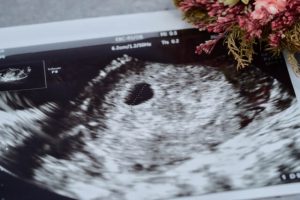What is Infertility Treatment?
Infertility treatment refers to the medical procedures carried out when a couple is unable to conceive a baby despite trying for a certain period. The causes of infertility can lie with either the woman or the man.
In recent years, the number of infertility treatments has been on the rise, and in 2017, as many as 56,000 babies were born through infertility treatment across Japan. Since April 2022, infertility treatment has been covered by insurance, reducing the financial burden compared to before.

When to Start Infertility Treatment?
If a certain period has passed without conceiving despite not using contraception, it may be time to consider the possibility of infertility. According to the Japan Society of Obstetrics and Gynecology, this “certain period” is defined as “about one year.” Therefore, it is common to start infertility treatment if pregnancy has not occurred after one year.
However, conditions such as endometriosis or a history of pelvic peritonitis can make pregnancy more difficult.
Additionally, aging is another factor that can make it harder to conceive. While there is no specific age by which treatment should be started, waiting a year may reduce the chances of pregnancy. Therefore, in some cases, it might be better to start treatment early depending on the situation.
The Process of Infertility Treatment
Infertility treatment generally follows the progression of ① Timing Method, ② Artificial Insemination, ③ In Vitro Fertilization (IVF), and ④ Intracytoplasmic Sperm Injection (ICSI). Depending on the situation, the treatment steps up to more effective methods as needed.
However, this progression is not always followed strictly. The appropriate treatment is selected based on the cause of infertility and the age at which treatment begins. Additionally, starting treatment does not necessarily mean that one must proceed through to the final step.
Types of Infertility Treatment
The functioning of thyroid hormones, insulin, and the amount of female hormone secretion can often be determined through blood tests, allowing the appropriate treatment to be started based on the test results.
So, what specific treatments are carried out for each of the four main types of infertility treatment?
Timing Method
Timing method is a treatment that predicts the ovulation day and schedules intercourse just before ovulation when the chances of pregnancy are highest. Since the lifespan of an egg is only 24 hours after ovulation, timing is a very important factor.
By recording basal body temperature and checking the luteal phase cycle, or using ovulation test kits, you can roughly predict the ovulation day.
However, the timing method is somewhat different from these methods.
To achieve pregnancy, a highly fertile egg is needed, so it is common to use ovulation induction drugs to ensure a good egg is ovulated, and to support the growth of the egg with treatments or confirm the size of the follicle using ultrasound to time intercourse appropriately.
Artificial Insemination
Artificial insemination aims to achieve pregnancy by introducing sperm into the uterus in sync with ovulation. Despite the term “artificial,” the process following the injection of sperm into the uterus does not differ significantly from natural conception or the timing method.
In natural conception and the timing method, sperm need to travel from the vagina to the uterus. In artificial insemination, sperm are directly injected into the uterus from the beginning. This increases the likelihood of the sperm meeting the egg.
In Vitro Fertilization (IVF)
In vitro fertilization (IVF) aims to achieve pregnancy by fertilizing harvested eggs with sperm to create embryos, which are then returned to the body once they have developed through repeated cell division. Because the procedure involves inserting a needle into the ovaries to collect eggs, some people may experience pain, but it is also possible to use anesthesia to minimize discomfort during egg retrieval.
To mature as many eggs as possible, the treatment involves using hormone medications to control ovulation. There are several methods for controlling ovulation, so it is important to choose the appropriate one based on the menstrual cycle condition.
Intracytoplasmic Sperm Injection (ICSI)
Intracytoplasmic sperm injection (ICSI) aims to achieve pregnancy by selecting a single, healthy sperm and injecting it directly into an egg. This treatment is performed when it is determined that the chances of pregnancy are extremely low with other infertility treatments.
Both IVF and ICSI are covered by insurance, with the patient bearing 30% of the cost. However, unlike other treatments, there are age and frequency limits for these treatments, so it is important to check these restrictions carefully.

Pregnancy Rates and Age in Infertility Treatment
From here, we will introduce the probability of pregnancy through infertility treatment by age, based on data published by the Japan Society of Obstetrics and Gynecology. Please refer to this information when considering treatment.
Pregnancy Rates in the 20s with Infertility Treatment
The probability of achieving pregnancy and giving birth through infertility treatment in your 20s is as follows.
Age Birth Rate 25 years old 20.9% 26 years old 20.8% 27 years old 19.3% 28 years old 19.8% 29 years old 19.9% Source: Ministry of Health, Labour and Welfare – Birth and Miscarriage Rates by Age in Infertility Treatment
By the way, the risk of having a child with Down syndrome is 1 in 1,053 at the age of 28. The probability of having a child with Down syndrome does not change whether or not you are undergoing infertility treatment.
Pregnancy Rates in the 30s with Infertility Treatment
The probability of achieving pregnancy and giving birth through infertility treatment in your 30s is as follows.
Age Birth Rate 30 years old 19.9% 31 years old 19.4% 32 years old 19.1% 33 years old 18.1% 34 years old 17.7% 35 years old 16.3% 36 years old 15.4% 37 years old 14.2% 38 years old 11.6% 39 years old 10.2% Source: Ministry of Health, Labour and Welfare – Birth and Miscarriage Rates by Age in Infertility Treatment
Gradually, it becomes apparent that the birth rate decreases with advancing age.
The probability of having a child with Down syndrome also increases with age. At 30 years old, it is 1 in 952, but at 38 years old, it increases to 1 in 175, about five times higher.
Pregnancy Rates in the 40s with Infertility Treatment
The probability of achieving pregnancy and giving birth through infertility treatment in your 40s is as follows.
Age Birth Rate 40 years old 7.7% 41 years old 5.3% 42 years old 3.7% 43 years old 2.0% 44 years old 1.3% 45 years old 0.6% Source: Ministry of Health, Labour and Welfare – Birth and Miscarriage Rates by Age in Infertility Treatment
Regardless of whether or not you are undergoing infertility treatment, the probability of becoming pregnant decreases sharply in your 40s. On the other hand, the probability of having a child with Down syndrome is 1 in 106 at age 40 and 1 in 38 at age 44, so many people consider NIPT (Non-Invasive Prenatal Testing).
Miscarriage Rates and Age in Infertility Treatment
Miscarriage occurs at a rate of approximately 8-15%, regardless of whether infertility treatment is being undertaken. So, how do these numbers change when infertility treatment is being carried out?
Miscarriage Rates in the 20s with Infertility Treatment
The probability of miscarriage in your 20s is as follows. There is no significant difference compared to the generally stated miscarriage rates.
Age Miscarriage Rate 25 years old 13.1% 26 years old 16.0% 27 years old 16.8% 28 years old 17.2% 29 years old 18.3% Source: Ministry of Health, Labour and Welfare – Birth and Miscarriage Rates by Age in Infertility Treatment
Miscarriage Rates in the 30s with Infertility Treatment
In the late 30s, an increase in miscarriage rates is observed. The rise in miscarriage rates with age is due to the increasing instability in the structure of eggs, making chromosomal abnormalities more likely.
Age Miscarriage Rate 30 years old 16.3% 31 years old 17.3% 32 years old 19.2% 33 years old 21.1% 34 years old 19.9% 35 years old 20.3% 36 years old 22.1% 37 years old 24.0% 38 years old 27.8% 39 years old 30.4% Source: Ministry of Health, Labour and Welfare – Birth and Miscarriage Rates by Age in Infertility Treatment
Miscarriage Rates in the 40s with Infertility Treatment
In the 40s, the miscarriage rate increases even further. For those aged 43 and above, more than half will experience a miscarriage, making it quite difficult to maintain a pregnancy.
Age Miscarriage Rate 40 years old 35.1% 41 years old 42.3% 42 years old 46.5% 43 years old 55.2% 44 years old 58.1% 45 years old 64.6% Source: Ministry of Health, Labour and Welfare – Birth and Miscarriage Rates by Age in Infertility Treatment
Conclusion
The probability of achieving pregnancy and giving birth through infertility treatment is 20.9% at age 25, 16.3% at age 35, and 0.6% at age 45. As the chances of pregnancy decrease with age, it is advisable to start treatment as early as possible if you suspect infertility.
Infertility treatment typically starts with the timing method, followed by artificial insemination, in vitro fertilization (IVF), and intracytoplasmic sperm injection (ICSI) as needed. The probability of chromosomal abnormalities, such as Down syndrome, does not change due to infertility treatment. However, if you are concerned, you may consider undergoing NIPT (Non-Invasive Prenatal Testing) after becoming pregnant.
【References】
- Ministry of Health, Labour and Welfare – Research and Study on the Actual Conditions of Infertility Treatment
- Japan Society of Obstetrics and Gynecology – Infertility
- Japan Society for Reproductive Medicine – For the General Public – Reproductive Medicine Q&A (Formerly Infertility Q&A): Q13. What is Intracytoplasmic Sperm Injection (ICSI)?
- Ministry of Health, Labour and Welfare – Table 2-3-24 Birth and Miscarriage Rates by Age in Infertility Treatment (xls)
- Ministry of Health, Labour and Welfare – Research and Study on the Actual Conditions of Infertility Treatment
- Ministry of Health, Labour and Welfare – The State of Assisted Reproductive Technology and the Approach to Specific Infertility Treatment Subsidies
Article Editorial Supervisor

Dr Hiroshi Oka
NIPT specialist clinic, MD
Graduated from Keio University, School of Medicine
 中文
中文






















